Have you ever wondered what it’d be like to travel the solar system? Well, we got to find out in Gainesville with their scale model solar system walking tour.
After visiting Babyland General Hospital in the morning where Shae got to watch a live Cabbage Patch Kid birth, we continued on to Gainesville, a city in North Georgia that’s about an hour northeast of Atlanta.
The walking tour of the solar system in Gainesville is a result of the Millennium Project, a community project organized by North Georgia Astronomers. It’s a true scale model of the solar system in a couple of different ways.
First, the planets are placed along the 1.8 mile route at a scaled down distance from each other, with one mile representing 2,000 billion miles. Secondly, there are scaled down sculptures of each of the planets (and some of their moons) as you walk along the route.
Here’s what it was like walking the solar system in Gainesville, Georgia (n.b. I’d first heard about it on Sites & Bites, so thanks for the tip Cassie!)

The tour begins in the Square in downtown Gainesville. It’s easy to spot the start of the solar system as there’s a large sculpture of the Sun at one end of the square.
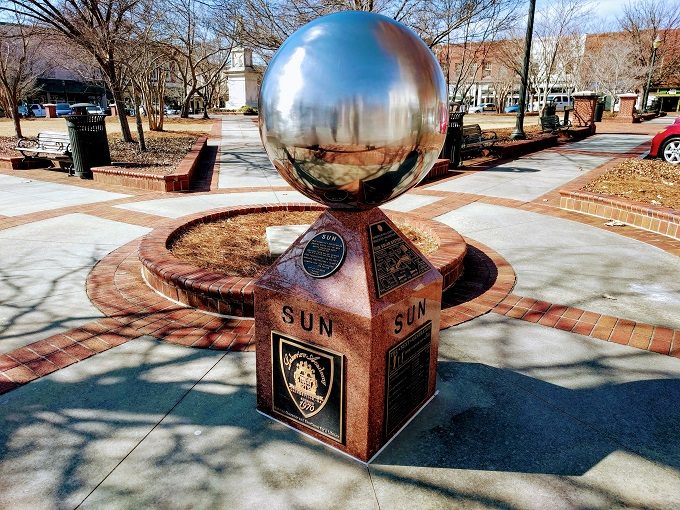
Needless to say, the Sun is the largest of all the sculptures you’ll see. It’s mounted on a four-sided plinth with information on all sides. On one side there’s a (not to scale) map of the route you need to take to find all the planets…
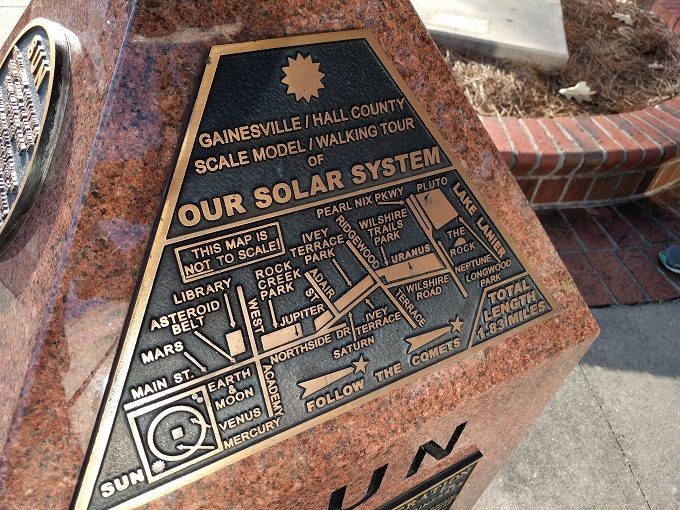
…a plaque with details about the scale of the solar system walking tour…
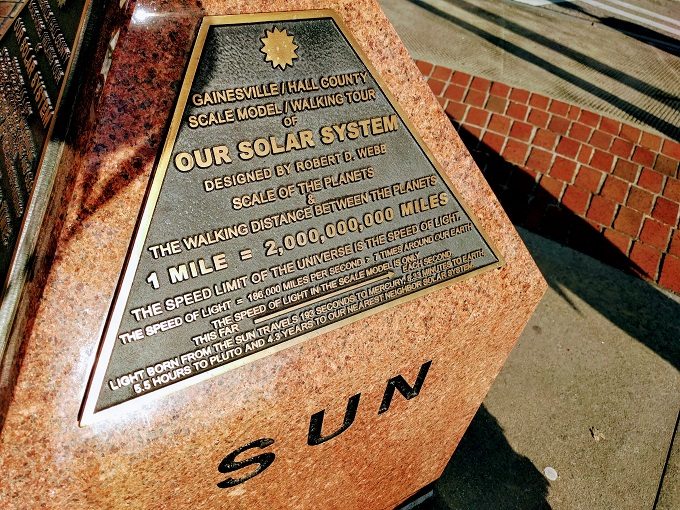
…the reason why the tour was created…
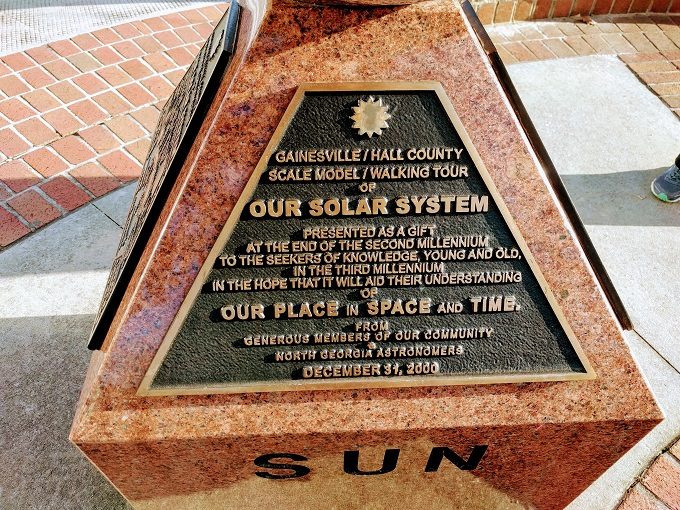
…and a plaque with statistic about the Sun.
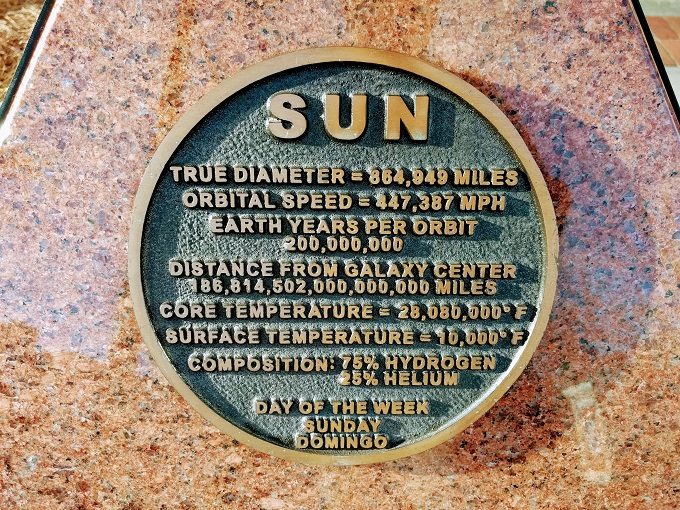
Leaving the Sun, start walking through the park until you reach the closest planet – Mercury.
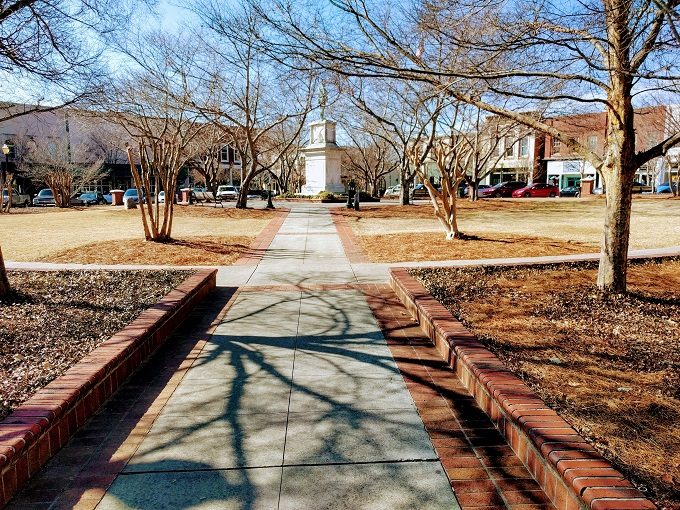
In comparison to the Sun, the sculpture of Mercury is tiny. In case you can’t see it, it’s the tiny pimple on the plaque above where it says ‘Mercury’.
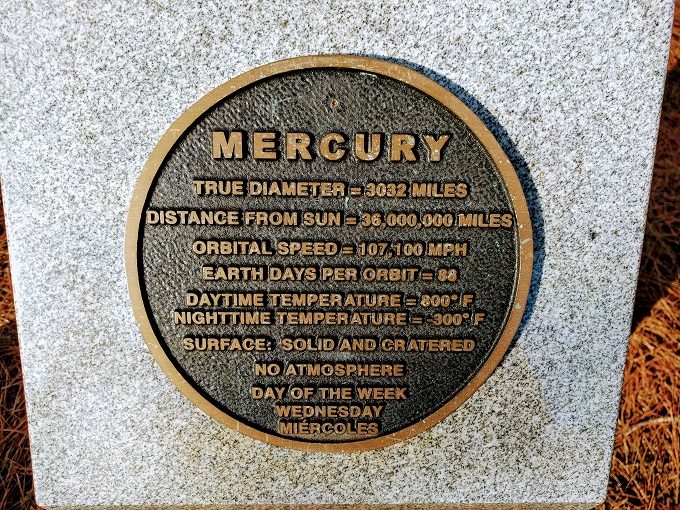
Keep walking in the same direction until you reach Venus, the second planet from the Sun.
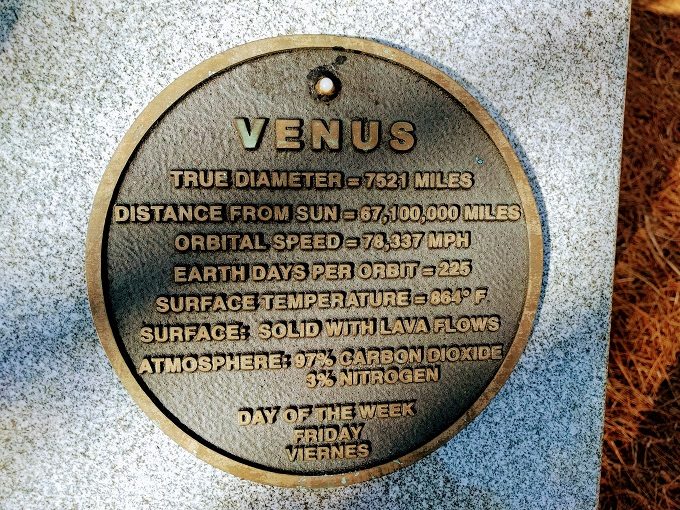
At the far end of the square, you’ll come across Earth and Moon.
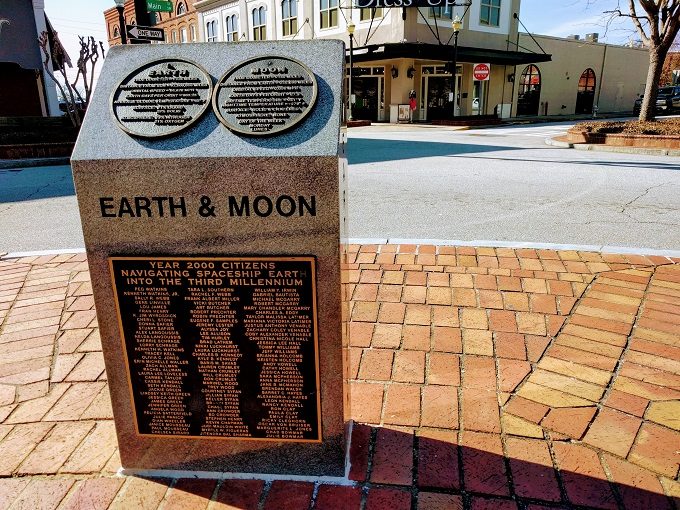
Here’s a closer look at Earth and Moon’s statistics.
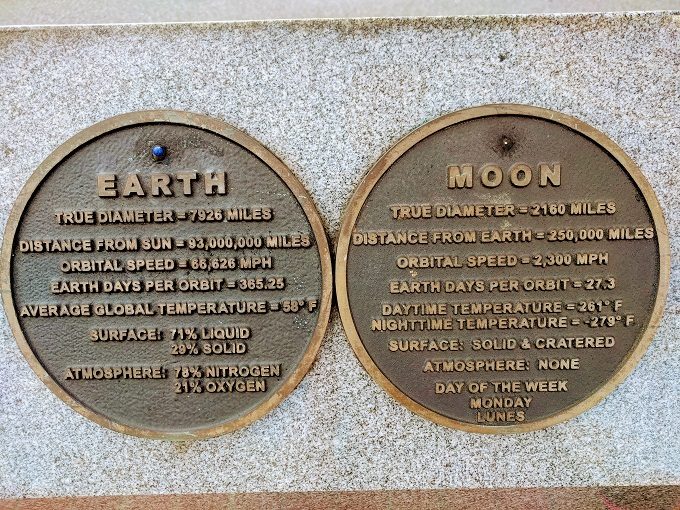
Mars is on the other side of the road to Earth, outside a store called Dress Up.
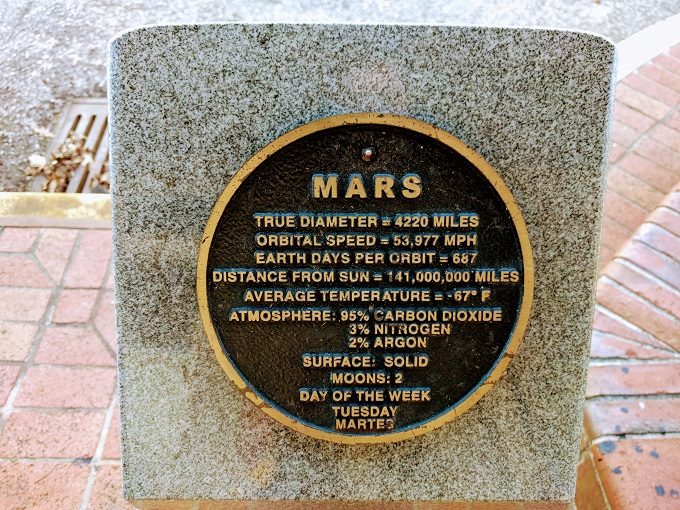
Continue walking down Main St and you’ll reach the Asteroid Belt.
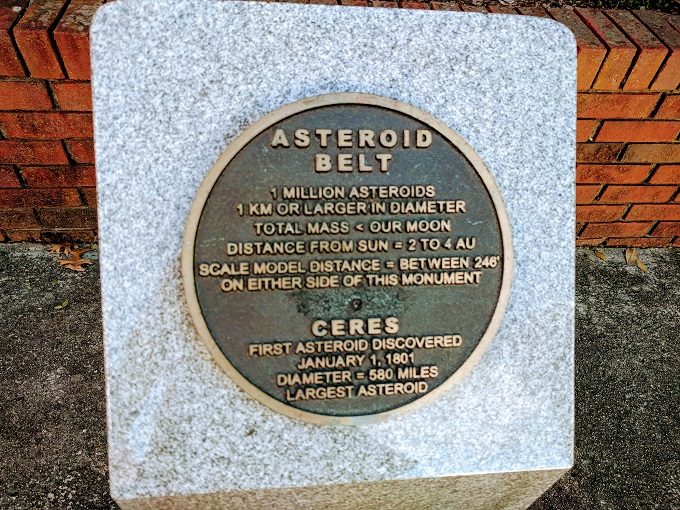
Main St will become Northside Dr, with Jupiter and the Galilean Moons being found outside of Rock Creek Veterans Park. The park’s worth walking round, so be sure to wander through there either on your journey out to the edge of the solar system or on your journey back to the Sun.
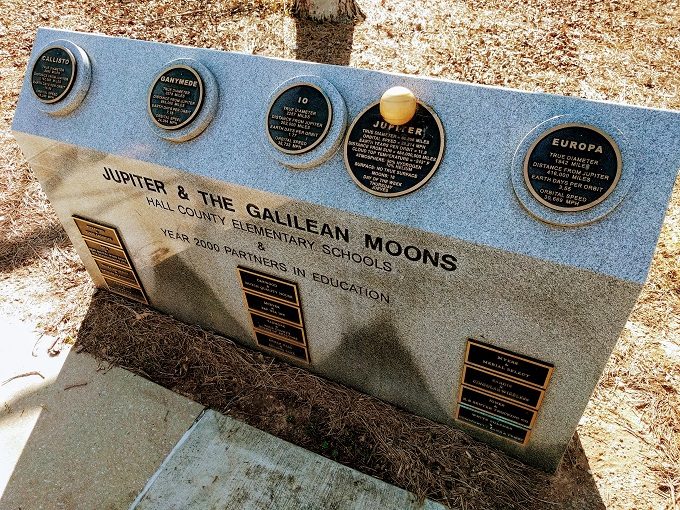
The scaled-down size of Jupiter gives a great idea of how, even though it’s the largest of all the planets, it’s tiny compared to the size of the Sun.

Next up is Saturn. Now, don’t do what we did and take the map on the Sun’s plinth at the start of the walk too literally.
The arrow on that map seemed to indicate that Saturn was on the opposite side of the road to Ivey Terrace Park. We walked along Ivey Terrace (the road, not the park) and thought that maybe it had been taken down for some reason, as the next planet we found was Uranus. However, we walked through Ivey Terrace Park on the way back and found Saturn.
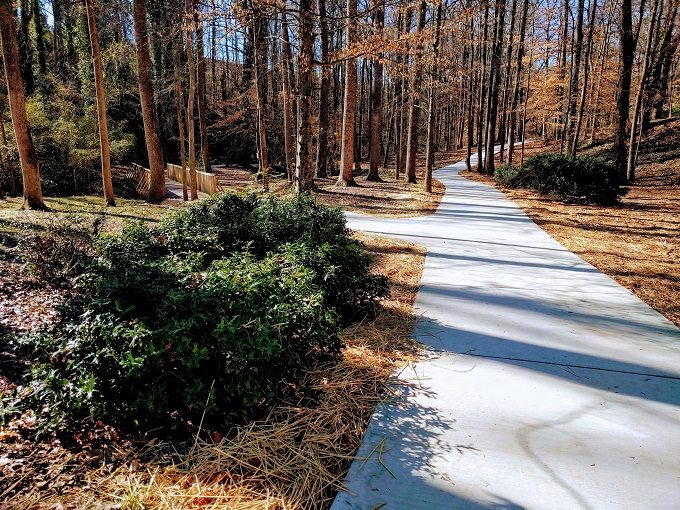
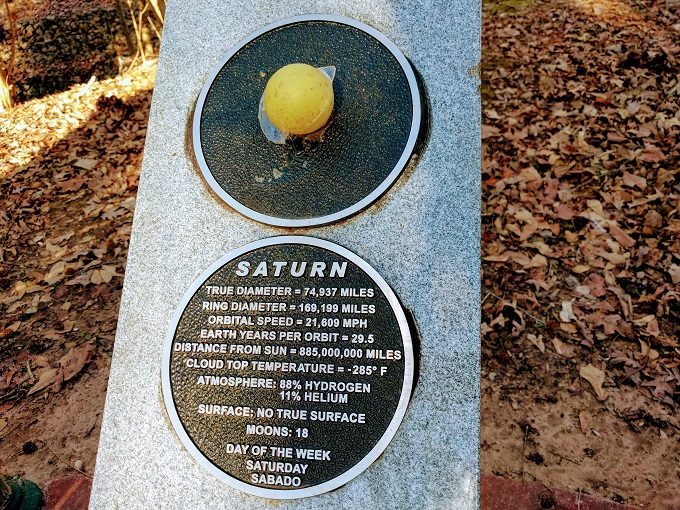
It’s a lovely walk along trails through the parks where you’ll eventually come to Uranus. The plaque seemed to be missing the planet, but the missing space still gave a good idea of its size in comparison to the other planets. I’ll be honest – I had no clue that Uranus is so large (no pun intended) in comparison to many of the other planets.
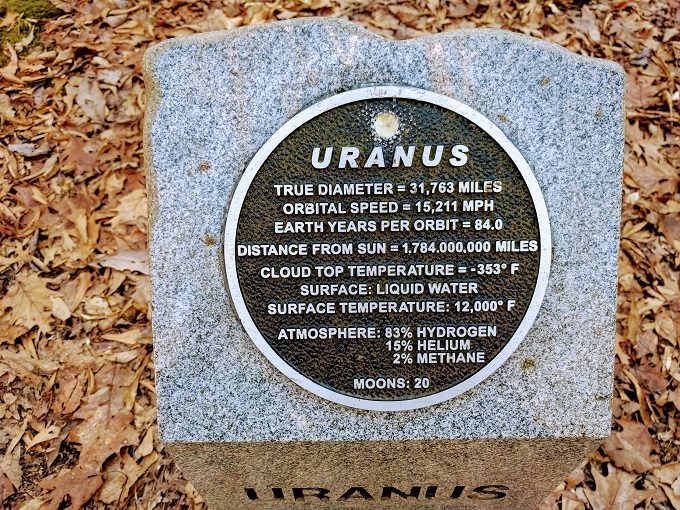
Truffles decided to have a good sniff of Uranus (that one was intended.)
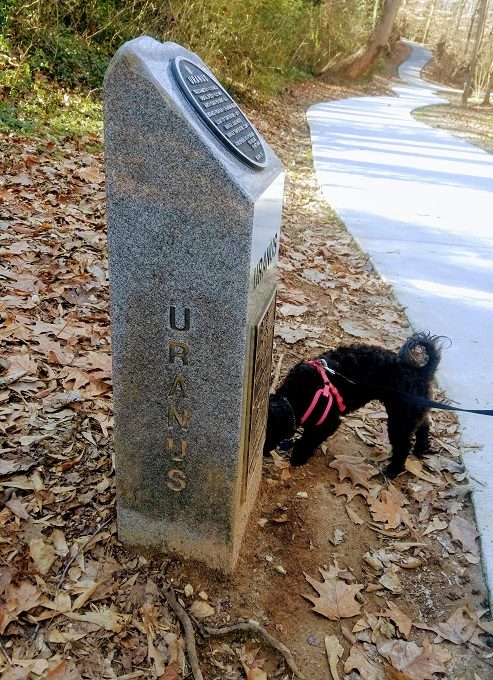
It’ll be a little while before you reach Neptune, so follow the boardwalk along through Wilshire Trails.
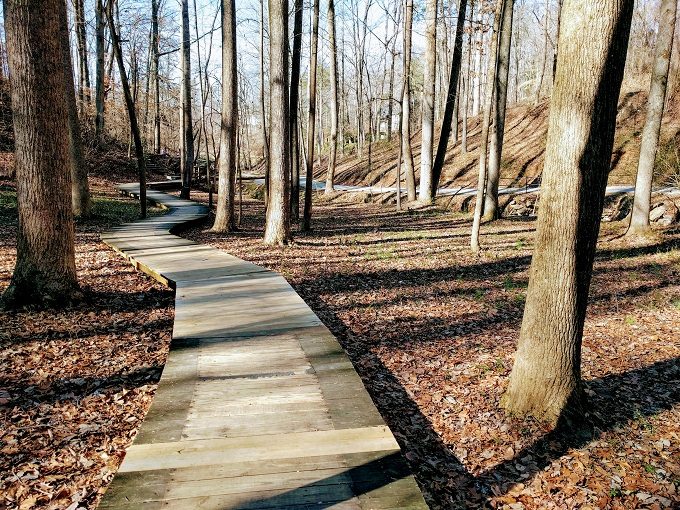
Once you’ve come to the end of that park, cross over the road. You’ll then head to the left until you find Neptune and Triton, one of its moons.

Similar to Uranus, Neptune was much larger than I thought it was.

The solar system walking tour continues in to Longwood Park. This is a pretty park on the edge of Lake Lanier – the largest lake in Georgia – with picnic areas, tennis courts, playgrounds and more. We’d eaten lunch before setting off on the walk, but Longwood Park would be a great place to stop for a picnic when you visit.
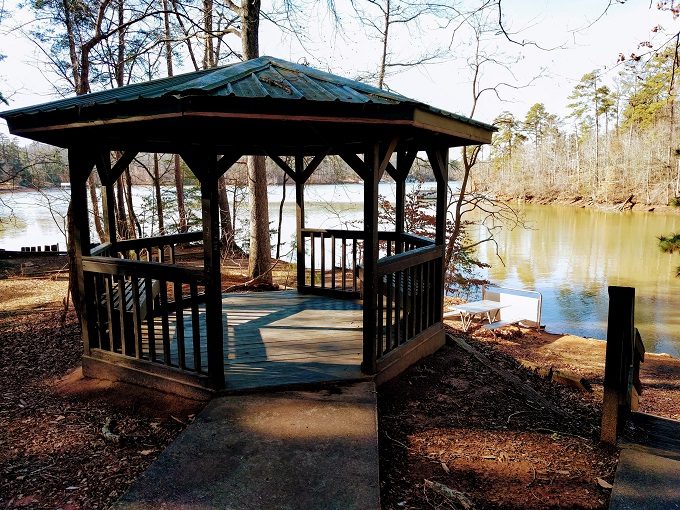
At the very far end of Longwood Park you’ll find Pluto and Charon.
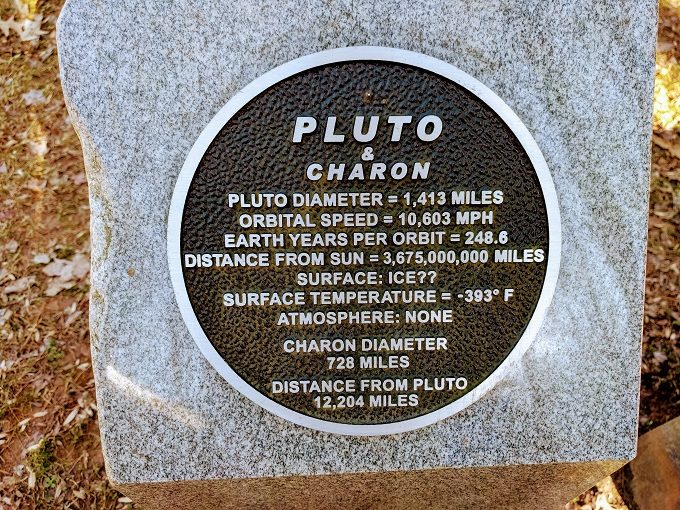
The walking tour of the solar system in Gainesville was created before the change in Pluto’s status as a planet, which is why it’s included as part of the tour. Shae came prepared with the perfect T-shirt for the occasion:
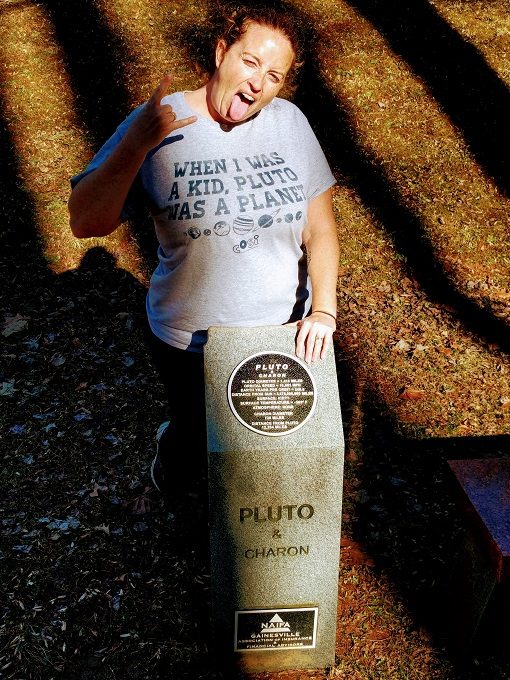
To the right of Pluto is the final part of the tour – a sign pointing in the direction of Alpha Centauri, the next closest star. The plinth notes that if continuing the scale model, Alpha Centauri would be 12,500 miles away. For comparison, the circumference of the earth is 24,901 miles, so you’d literally have to walk to the other side of Earth to reach it.
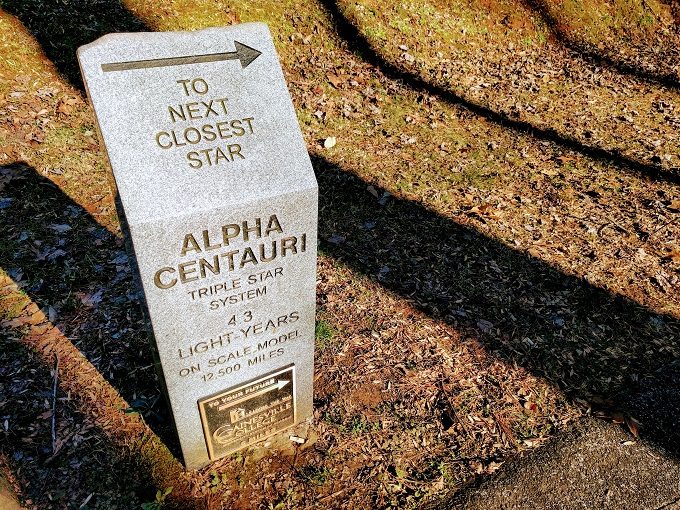
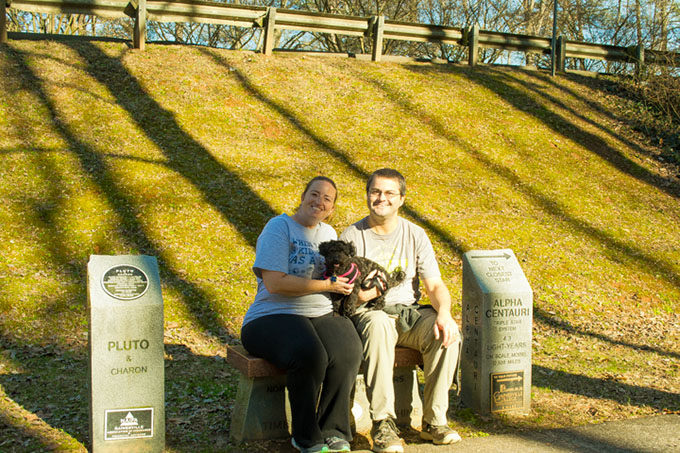
Final Thoughts
If you’ll be in North Georgia or Atlanta, Gainesville’s solar system walking tour is a fun, free thing to do for people of all ages. It’s an excellent way to learn more about the Sun and its orbiting planets while getting some exercise.
The 3.6 mile round trip was also a beautiful walk through several different parks, seeing more of Gainesville along the way.
Woot! Thanks for the shout out! Glad I could be of assistance. Florida regions bucket lists were supposed to be next in my blog but the 2018 guide hasn’t arrived yet. Boo! But the Alabama one has so I may move into that state next instead!
It’ll be interesting to see how the Alabama guide matches up with what we end up doing there as that’s our next state 🙂
Hi there! My husband and I are interested in doing this. We just want to make sure it’s safe! Also, do you think it would be okay to ride bikes along the tour?
Thanks!
Ashley Kenobbie
Yes, it should be possible to socially distance yourself along the route. Bikes should be fine too, although you might need to get off and push them at certain points.
Cool article I wish I could go but my mother might say one day🥲.